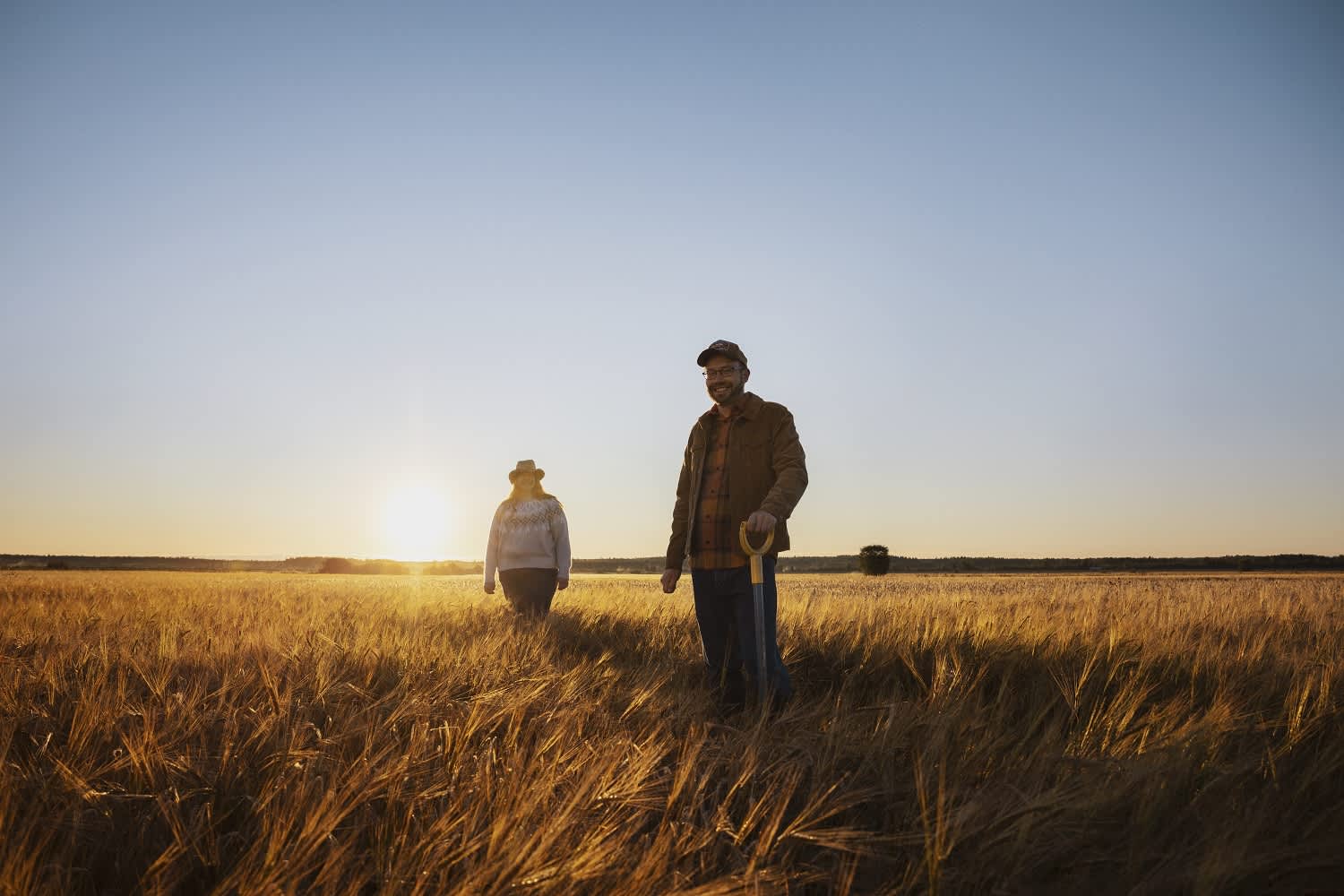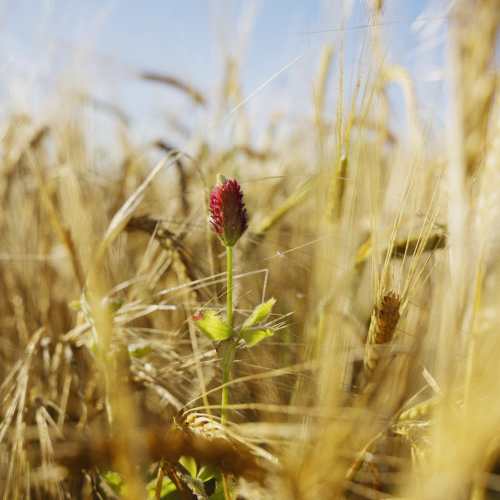
Regenerative farming for the climate, from the Aila-Korpela farm to Koskenkorva distillery
Anora's Koskenkorva distillery is a world-class in terms of sustainability and circular economy. The plant runs mainly on bioenergy generated by its own bioenergy power plant, and its recycling and reutilisation rate is 99.9 percent. Anora aims also to increase the use of regeneratively farmed barley in the production of Koskenkorva Vodka. Veli-Pekka Aila is one of Anora’s contract farmers who, together with his wife Noora, has transitioned to using regenerative farming practices.
Regenerative farming is a selection of farming methods that improve yields and help reduce the CO2 emissions generated by agriculture. Regenerative literally means something that can reproduce or recreate itself. In agriculture, this involves improving natural processes and cycles both in the ground and on its surface.
"For us, regenerative agriculture is a way of leaving our fields to future generations in a better condition than they would be if we had used traditional farming methods," says farmer Noora Aila, who supplies barley to the Koskenkorva distillery.
Noora and Veli-Pekka Aila are both agrologists. They met seven years ago and today both work at Veli-Pekka’s farm. Together they started thinking about how they could improve their farming methods.
A long-term aim has been to leave the soil untouched as much as possible and reduce ploughing and tillage, in order to minimise mineral depletion and lessen damage to the soil. This is the first step towards regenerative farming.

Then the discussion turned to the planting of cover crops to cover the field after the harvest. Keeping the soil covered with vegetation has many advantages: the soil retains its moisture for longer, it prevents erosion, increases nutrients and biomass as well as sequesters carbon in the soil, and hinders weed growth.
"We get government subsidies for growing cover crops, but this is not something we do to make money," says Noora.
She stresses the importance of planting crops that grow quickly after the harvest but perish during the winter before the next crop is planted again in the spring. This is why she and Veli-Pekka mainly use annual plants.
"This way we put the fields to work to generate biomass, which adds nutrients to the soil. At first, we tried using grasses as cover crops, but since they are perennial plants, they increased in volume in the second year and disturbed the growth of our main crops. Now we grow a mixture of plants that contains clover, amongst others. We’ve concluded that it’s good to mix different crops, as they grow best in different locations,” Noora explains.
A shared approach with Koskenkorva distillery
At Koskenkorva distillery they heard about Veli-Pekka when a Finnish newspaper wrote an article about him and his views on farming.
“Anora contacted us. We talked for hours about farming methods and climate impact and realised that we had the same approach to more climate-friendly farming. That’s also when we realised that our farming methods correspond to the regenerative farming practices that Anora promotes.”

Before the barley grown by Veli-Pekka and Noora ended up in Kostenkorva’s distilling process, they had to undergo a thorough examination.
“An external, impartial auditor came to check that we practice what we preach and that everything has been documented as it should,” Noora says.
With almost 400 hectares of farmland, the Aila-Korpela farm is regarded as a large estate by Finnish standards. Like the Koskenkorva distillery, the Aila-Korpela farm is also located in Ostrobothnia, about 40 minutes' drive from the Koskenkorva village. Barley is Noora and Veli-Pekka’s main crop, but they also grow oats, wheat, rye, legumes, and oilseed crops. The latter are important for creating a diverse crop rotation in regenerative farming.
Humus binds water in the soil
Noora says that regenerative agriculture contributes to biodiversity and accumulates the humus layer, which is the top layer of the soil.

“For us, humus is crucial, though carbon sequestration is also a good thing. Humus, however, is key to enabling the soil to absorb water for the plants to use during the growing season. With climate change we are experiencing warmer and warmer summers, and weeks can go by without rain. Due to this we need to help the soil to absorb water for those long, dry periods,” she explains.
The accumulation of humus is a slow process, which is why it is so important to begin working on it now.
“For us it’s the most important reason why we are investing in regenerative agriculture,” Noora concludes.
